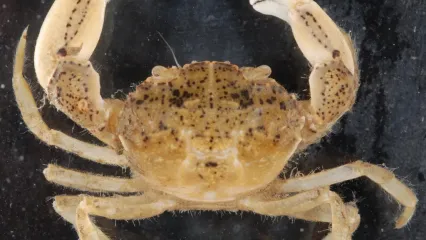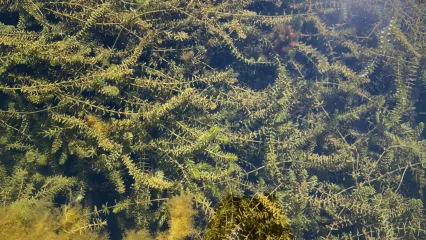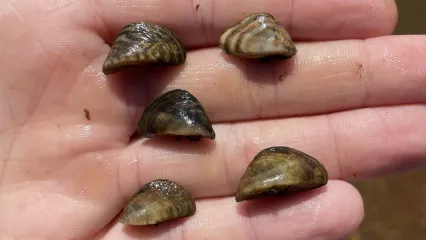
Description
***INVASIVE!***
Status and Impacts
Soon after it was discovered in the state, researchers from Southeastern Oklahoma State University (SEOSU) began surveying for the crabs. After several unsuccessful trapping and surveying attempts, it is thought that the Harris mud crab population in Oklahoma is limited. Because the numbers are small, and the research has just begun, it is unknown whether the crabs have been introduced (by way of boats or released bait), or naturally traveled their way to Oklahoma from Texas through rivers. Research is also being conducted in Texas by Tarleton State University in Stephenville. There, DNA samples are being collected to determine if the crabs are more closely related to the population naturally found on the Atlantic coast, or the population found along the Gulf Coast. This should establish the introduction method.
Like many aquatic nuisance species, the Harris mud crab has negatively affected the native habitat, it is the only species of crab present in low-salinity waters. Food competition with native species is one of the biggest threats. Another is the damage caused when the crabs clog intake valves and other water delivery systems.
Identification Key
- Slightly larger than a dime
- Olive green to brown and has white-tipped claws
- Four pairs of walking legs (hairy) and one pair of pinchers
- Five marginal teeth and the first two are partly fused
Size
Slightly larger than a dime
Habitat
Harris mud crab is most abundant in estuarine habitats, usually at reduced salinities, with some form of shelters such as oyster reefs, vegetation, or logs. Generally found in brackish waters, it can complete its life cycle in freshwater and is found throughout Texas.
Life Cycle
In the summer of 2009, anglers came across the non-native crustacean while fishing on the Oklahoma side of Lake Texoma. This find marked the first report of the species in Oklahoma and has begun a research study to determine the introduction source and potential effects on the lake’s ecosystem. This species has created both economic and ecological problems in several states, including Texas.
How To Observe
If you think you have discovered any invasive species contact us at (918) 200-4815 or report online.


